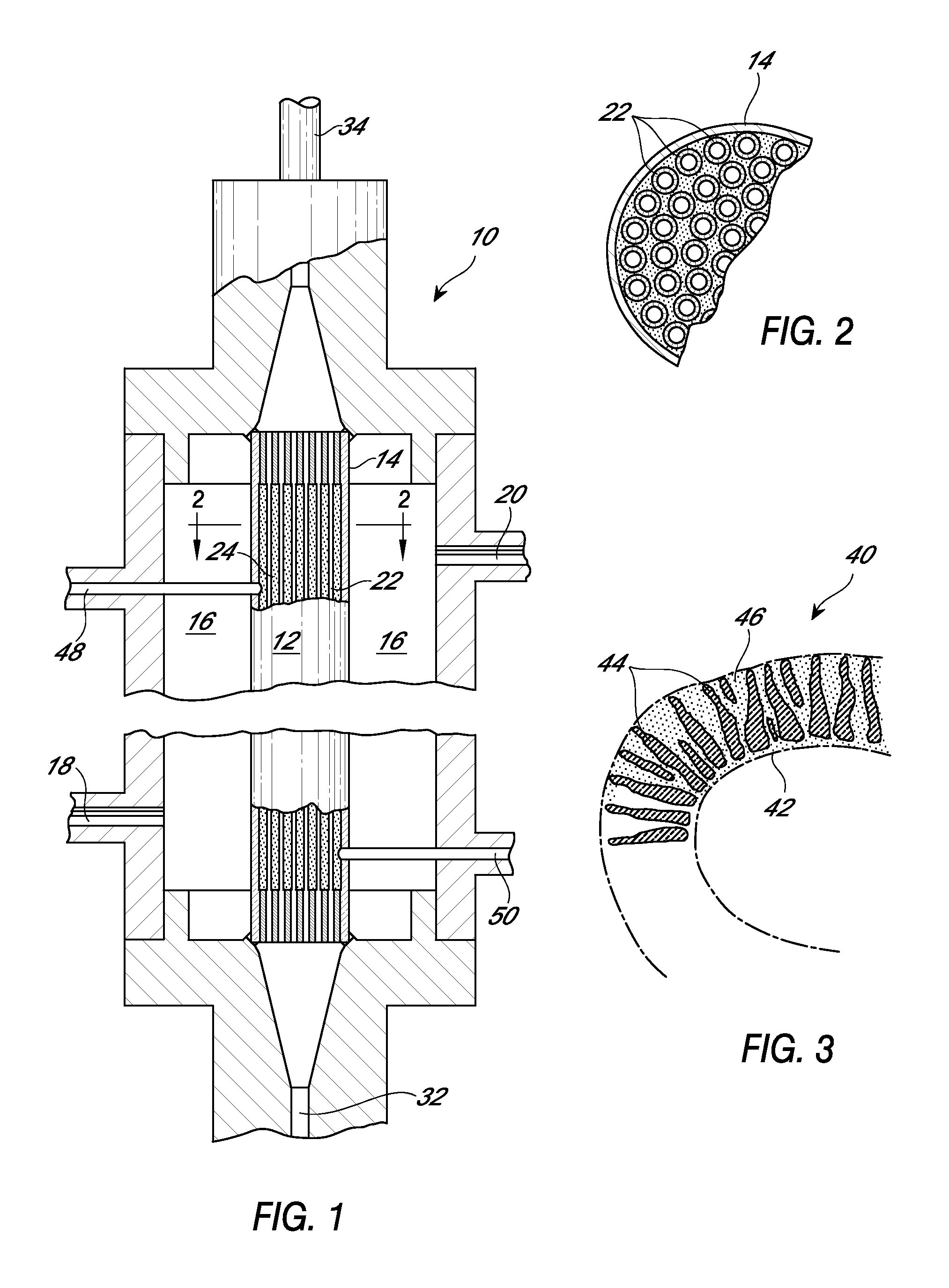Device and method for purifying virally infected blood
a technology of viral infection and purification method, which is applied in the field of therapeutic methodologies and devices for treating viral infections, can solve the problems of limiting the effectiveness of therapy, increasing the likelihood of viral infection with these deadly agents, and difficulty in treatment for viral diseases, so as to reduce the antigenic assault on the immune system
- Summary
- Abstract
- Description
- Claims
- Application Information
AI Technical Summary
Benefits of technology
Problems solved by technology
Method used
Image
Examples
example 1
[0082]This Example demonstrates the preparation of an affinity matrix using GNA covalently coupled to agarose using cyanogen bromide. Cyanogen bromide (CNBr) activated agarose was used for direct coupling essentially according to Cuatrecasas, et al (Cuatracasas et al. Proc Natl Acad Sci USA 61(2): 636-643, 1968). In brief, 1 ml of GNA at a concentration of 10 mg / ml in 0.1M NaHCO3 pH 9.5 was added to 1 ml CNBr activated agarose (Sigma, St. Louis, Mo.) and allowed to react overnight in the cold. When the reaction was complete, unreacted materials were aspirated and the lectin coupled agarose washed extensively with sterile cold PBS. The lectin agarose affinity matrix was then stored cold until ready for use. Alternatively, GNA agarose is available commercially from Vector Labs (Burlingame, Calif.)
example 2
[0083]This Example demonstrates preparation of the lectin affinity matrix using GNA covalently coupled to glass beads via Schiff's base and reduction with cyanoborohydride. The silica lectin affinity matrix was prepared by a modification of the method of Hermanson (Hermanson. Bioconjugate Techniques: 785, 1996). GNA lectin was dissolved to a final protein concentration of 10 mg / ml in 0.1M sodium borate pH 9.5 and added to aldehyde derivatized silica glass beads (BioConnexant, Austin Tex.). The reaction is most efficient at alkaline pH but will go at pH 7-9 and is normally done at a 2-4 fold excess of GNA over coupling sites. To this mixture was added 10 μl 5M NaCNBH3 in 1N NaOH (Aldrich, St Louis, Mo.) per ml of coupling reaction and the mixture allowed to react for 2 hours at room temperature. At the end of the reaction, remaining unreacted aldehyde on the glass surfaces are capped with 20 μl 3M ethanolamine pH 9.5 per ml of reaction. After 15 minutes at room temperature, the react...
example 3
[0084]This Example demonstrates preparation of GNA covalently coupled to aminocelite using glutaraldehyde. Aminocelite was prepared by reaction of celite (silicate containing diatomaceous earth) by overnight reaction in a 5% aqueous solution of aminopropyl triethoxysilane. The aminated celite was washed free of excess reagent with water and ethanol and dried overnight to yield an off white powder. One gram of the powder was then suspended in 5 ml 5% glutaraldehyde (Sigma) for 30 minutes. Excess glutaraldehyde was then removed by filtration and washing with water until no detectable aldehyde remained in the wash using Schiffs reagent. The filter cake was then resuspended in 5 ml of Sigma borohydride coupling buffer containing 2-3 mg / ml GNA and the reaction allowed to proceed overnight at room temperature. At the end of the reaction, unreacted GNA was washed off and the unreacted aldehyde aminated with ethanolamine as described. After final washing in sterile PBS, the material was sto...
PUM
 Login to View More
Login to View More Abstract
Description
Claims
Application Information
 Login to View More
Login to View More - R&D
- Intellectual Property
- Life Sciences
- Materials
- Tech Scout
- Unparalleled Data Quality
- Higher Quality Content
- 60% Fewer Hallucinations
Browse by: Latest US Patents, China's latest patents, Technical Efficacy Thesaurus, Application Domain, Technology Topic, Popular Technical Reports.
© 2025 PatSnap. All rights reserved.Legal|Privacy policy|Modern Slavery Act Transparency Statement|Sitemap|About US| Contact US: help@patsnap.com



